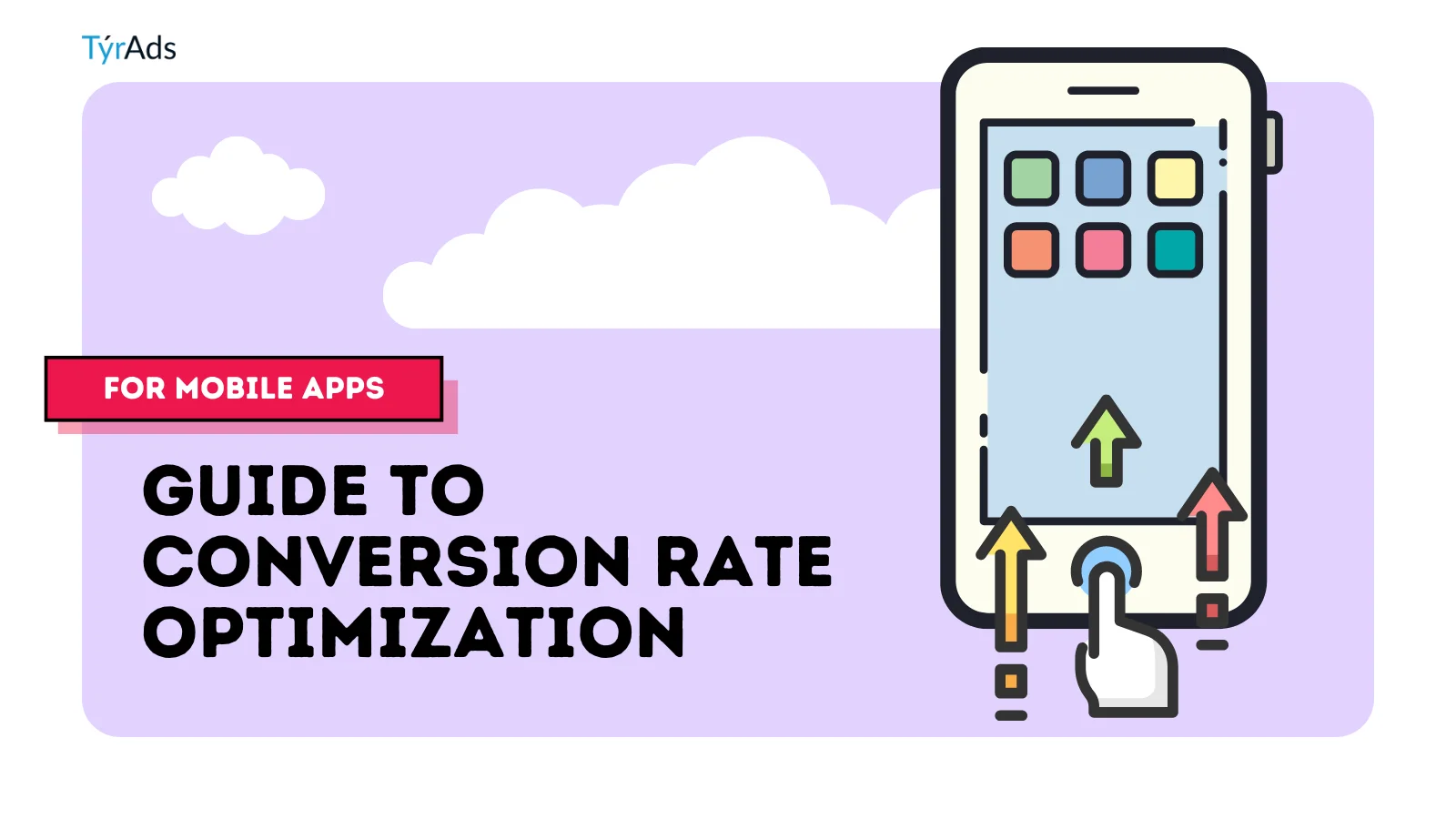
ARPU vs LTV: The Ultimate Guide for Marketers
Two crucial metrics that play a pivotal role in assessing the health and success of a mobile app business are Average Revenue Per User (ARPU) and Customer Lifetime Value (LTV). In this article, we’ll delve into the intricacies of ARPU vs LTV, explore their distinctions, and highlight their significance in measuring business success.
ARPU represents the average revenue generated per user or customer within a specific timeframe. On the other hand, LTV refers to the projected revenue that a customer is expected to generate over the entire duration of their relationship with a company. While ARPU and LTV share a common goal of measuring revenue generation, they focus on different aspects of a mobile app business.
We will dive deeper to unravel the mysteries of ARPU vs LTV, providing you with practical insights to measure and interpret these metrics and understand how they impact the success of your mobile app business.
Understanding ARPU
ARPU provides insights into the revenue generated per user or customer within a specific timeframe. It helps businesses gauge revenue generation efficiency and make informed decisions regarding pricing strategies, product offerings, and customer segmentation.
ARPU represents the average amount of revenue generated per user. It is calculated by dividing the total revenue generated during a specific period by the number of users or customers within that same period. This calculation helps businesses assess the average value of their customer base and evaluate their monetization efforts.
ARPU plays a crucial role in measuring business performance for mobile app companies. Tracking ARPU over time reveals revenue trends and potential areas for improvement. A rising ARPU indicates successful efforts to increase the average value of customers through pricing optimizations, upselling, or cross-selling. A declining ARPU may indicate pricing inefficiencies, customer churn, or ineffective monetization strategies.
ARPU plays a crucial role in measuring business performance for mobile app companies.
TyrAds
Additionally, ARPU helps evaluate the impact of pricing plans or packaging changes. By monitoring ARPU before and after implementing new pricing models, businesses can determine whether these changes lead to higher or lower revenue per user, informing decisions to optimize pricing structures.
To calculate ARPU, divide the total revenue generated during a specific period by the total number of users or customers.
For example, if a mobile app company generated $100,000 in revenue monthly and had 1,000 active users, the ARPU would be $100. This means that, on average, each user generated $100 in revenue for that month.
It is essential to define the period for which ARPU is calculated, such as monthly, quarterly, or annually. Analyzing ARPU over different periods helps identify seasonal patterns, evaluate the impact of marketing campaigns or product launches, and track overall revenue growth.
Calculating and tracking ARPU over time enables businesses to assess revenue generation efficiency, optimize pricing strategies, and identify areas for growth and improvement.
More: Boost Your ARPMAU with These 7 Proven Strategies
Understanding LTV
The Customer Lifetime Value (LTV) metric estimates the revenue a customer is expected to generate over their entire relationship with a company. This includes factors such as purchases, subscriptions, upgrades, and cross-selling. By analyzing LTV, businesses can make informed decisions about customer acquisition costs and retention strategies without repeating the same information.
LTV is a crucial measure of customer value and serves as an indicator of a mobile app business’s success. It allows companies to assess the revenue potential of each customer throughout their entire lifecycle, empowering them to optimize their acquisition, nurturing, and retention strategies more efficiently.
One of the primary roles of LTV is guiding decisions on customer acquisition costs. By comparing the estimated LTV with the costs associated with acquiring customers, businesses can evaluate the profitability of their marketing efforts. This analysis enables them to allocate their resources effectively, thereby maximizing investment returns.
One of the primary roles of LTV is guiding decisions on customer acquisition costs
TyrAds
Moreover, LTV also plays a vital role in identifying opportunities for upselling and cross-selling. By understanding the potential revenue generated from existing customers, businesses can develop targeted strategies to encourage additional purchases and offer complementary products or services. This approach increases revenue and strengthens customer loyalty, resulting in long-term benefits for the company.
To calculate LTV, various factors need to be considered, including the average purchase value, purchase frequency, customer lifespan, and gross margin. The formula involves multiplying the average purchase value by the purchase frequency and the customer lifespan and subtracting the gross margin. This calculation provides an estimate of the customer’s lifetime value.
For instance, suppose a mobile app company has an average purchase value of $50, a purchase frequency of twice per month, a customer lifespan of 12 months, and a gross margin of 60%. In that case, the estimated LTV would amount to $480.
Businesses can further refine LTV calculations by segmenting their customers based on demographics, behavior, or purchase history. This segmentation allows for a more tailored approach to developing strategies for higher-value customer segments, maximizing the effectiveness of their efforts.
In conclusion, LTV is a metric that measures the projected revenue a customer is expected to generate throughout their entire relationship with a company. It is a valuable tool for making decisions regarding acquisition costs, identifying opportunities for upselling and optimizing strategies to enhance overall business performance.
ARPU vs LTV: Key Differences
While both ARPU and LTV play crucial roles in measuring the success of a mobile app business, there are key differences between these two metrics. Let’s explore these differences in calculation, focus, and timeframe, as well as their significance in business decision-making.
Calculation
- ARPU is determined by dividing the total revenue generated within a specific period by the number of users or customers during that same period.
- LTV is calculated by considering the average purchase value, frequency, and customer lifespan and subtracting the associated costs.
Focus
- ARPU focuses on revenue per user or customer, evaluating the effectiveness of monetization efforts and pricing strategies.
- LTV focuses on the value a customer brings throughout their entire relationship with the company, considering recurring revenue, upselling, cross-selling, and retention strategies.
Timeframe
- ARPU provides insights into short-term revenue generation, calculated for specific periods like monthly, quarterly, or annually.
- LTV takes a long-term perspective, considering the entire customer relationship duration with the company.
Significance in Business Decision-Making
ARPU:
- Serves as a key performance indicator, evaluating revenue generation efficiency and the effectiveness of monetization strategies.
- It helps assess the success of pricing models, product offerings, and customer segmentation.
- Identifies trends over time, allowing businesses to make adjustments and improvements.
LTV:
- Guides decisions related to customer acquisition costs and retention strategies.
- Estimates the total value a customer is expected to bring over their lifetime.
- Helps allocate resources and prioritize efforts to retain high-value customers.
- Identifies upselling and cross-selling opportunities, increasing customer value and driving revenue growth.
In summary, while ARPU and LTV share the common goal of measuring revenue generation, they differ in calculation, focus, and timeframe. Both metrics are vital for business decision-making, with ARPU providing insights into short-term performance and LTV informing long-term strategic planning. Understanding these nuances is essential for gaining valuable insights into a mobile app business’s revenue streams, customer base, and growth potential.
More: What is a Good Conversion Rate? How to Improve Yours
Balancing ARPU and LTV for Business Success
When measuring and driving business growth in the mobile app industry, it’s essential to balance ARPU and LTV. Both metrics provide valuable insights into revenue generation, customer value, and the overall health of a mobile app business. Let’s explore the importance of considering ARPU and LTV and discuss strategies for optimizing these metrics in your business.
ARPU and LTV are crucial because they offer complementary perspectives on revenue and customer value. ARPU provides a snapshot of the average revenue generated per user or customer within a specific timeframe. It helps businesses evaluate the effectiveness of their pricing strategies, product offerings, and customer segmentation. By monitoring ARPU trends, companies can identify areas for improvement and make data-driven decisions to increase revenue per user.
On the other hand, LTV takes a long-term view of customer value. It considers the entire customer lifecycle and estimates the total revenue a customer is expected to generate over their relationship with the company. LTV helps businesses assess the profitability of acquiring and retaining customers. By understanding the value a customer brings over their lifetime, companies can optimize their customer acquisition costs, retention strategies, and revenue forecasting.
To optimize ARPU, businesses can employ the following strategies:
- Analyze pricing models: By evaluating and experimenting with different pricing tiers or plans, businesses can cater to different customer segments and capture additional revenue from those willing to pay for premium features or higher-priced plans.
- Implement upselling and cross-selling: Identifying opportunities to offer additional products, features, or upgrades to existing customers can increase the average revenue per user and maximize customer value.
When it comes to optimizing LTV, consider the following strategies:
- Improve customer retention: Providing exceptional customer support, delivering ongoing value through product updates and enhancements, and building solid relationships can increase customer loyalty and extend their lifespan, ultimately boosting LTV.
- Implement effective customer success programs: By helping customers derive maximum value from the product or service, businesses can increase engagement, satisfaction, and the likelihood of generating more revenue over time.
- Focus on customer satisfaction and advocacy: Delivering a superior customer experience improves retention and leads to positive word-of-mouth referrals and new customer acquisitions. Cultivating a loyal customer base that becomes advocates for the product or service contributes to long-term revenue growth.
It’s important to note that optimizing ARPU and LTV should be approached with a balance in mind. Striking the right balance ensures that customers perceive value in the product or service and are willing to continue their relationship, ultimately driving long-term growth and profitability.
More: How to Calculate Return on Investment: A Beginner’s Guide
Real-life Examples and Case Studies
To illustrate the practical application of ARPU and LTV metrics, let’s look into real-life examples of businesses that have successfully leveraged these metrics to drive growth and achieve business success. By examining these case studies, we can uncover valuable insights and lessons that can be applied to your own mobile app business.
Example 1: Netflix
Netflix, the renowned streaming platform, has effectively utilized both ARPU and LTV to transform the entertainment industry. Netflix’s pricing strategy is designed to optimize ARPU. By offering different subscription plans with varying features and pricing tiers, they cater to a wide range of customer segments. The ability to choose between basic, standard, and premium plans allows customers to select the options that align with their preferences and budget, ultimately increasing ARPU.
Furthermore, Netflix focuses on maximizing LTV by prioritizing customer retention. Through personalized recommendations, algorithm-driven content suggestions, and seamless user experience, Netflix keeps customers engaged and invested in their platform. By consistently delivering value, they have extended the customer lifespan and increased LTV. The company also capitalizes on upselling opportunities by introducing new pricing tiers and features like Ultra HD and multiple concurrent streams.
Example 2: Salesforce
Salesforce, a leading customer relationship management (CRM) platform, demonstrates the importance of LTV in driving business success. Salesforce emphasizes long-term customer relationships and prioritizes customer success as a key driver of LTV. They provide extensive training and support resources to ensure customers achieve maximum value from their CRM solutions. By nurturing strong customer relationships and delivering exceptional service, Salesforce has retained customers over extended periods, leading to higher LTV.
Salesforce also utilizes upselling and cross-selling strategies to increase LTV. Introducing new features and modules allows customers to enhance their CRM capabilities and tailor the solution to their evolving needs. This not only generates additional revenue but also strengthens customer loyalty and satisfaction.
Read: How Pluang Overachieved Its Download and LTV Goals
Lessons Learned
From these examples, we can draw valuable lessons for optimizing ARPU and LTV in your own mobile app business:
- Tailor pricing models: Offer different pricing tiers and plans to cater to various customer segments, enabling customers to choose the options that align with their needs and budget.
- Focus on customer retention: Prioritize customer success and satisfaction to extend the customer lifespan. Provide exceptional support, personalized experiences, and ongoing value to keep customers engaged and loyal.
- Upselling and cross-selling: Identify opportunities to upsell and cross-sell additional products, features, or upgrades to existing customers. Continuously assess customer needs and introduce relevant offerings to increase revenue per user.
- Provide exceptional customer experience: Deliver a seamless user experience, personalized recommendations, and proactive support. Invest in training and resources that empower customers to derive maximum value from your product or service.
- Foster customer advocacy: Nurture strong customer relationships and create promoters who advocate for your brand. Positive word-of-mouth referrals can lead to new customer acquisitions and contribute to long-term revenue growth.
By implementing these strategies and learning from successful businesses like Netflix and Salesforce, you can effectively balance ARPU and LTV to drive growth and achieve business success in the mobile app industry.
Conclusion
ARPU is a key performance indicator that provides valuable insights into revenue generation efficiency and the effectiveness of monetization strategies. It aids businesses in evaluating pricing models, product offerings, and customer segmentation. Meanwhile, LTV influences customer acquisition costs, retention strategies, and revenue forecasting decisions. It enables businesses to calculate the long-term value of acquiring and retaining customers.
To achieve business success, it is critical to balance ARPU and LTV. Businesses can increase revenue per user by optimizing ARPU with pricing optimization and upselling. Optimizing LTV, on the other hand, entails concentrating on customer retention, upselling, cross-selling, and providing exceptional customer experiences.
As a result, we encourage you to begin measuring and optimizing ARPU and LTV in your mobile app business. Understand the differences between these metrics and how to use their unique insights to drive growth and profitability. Implement pricing strategies that maximize revenue per user, prioritize customer success and retention, and capitalize on upselling and cross-selling opportunities. By striking the right balance between ARPU and LTV, you can position your company for long-term success in the volatile mobile app industry.






